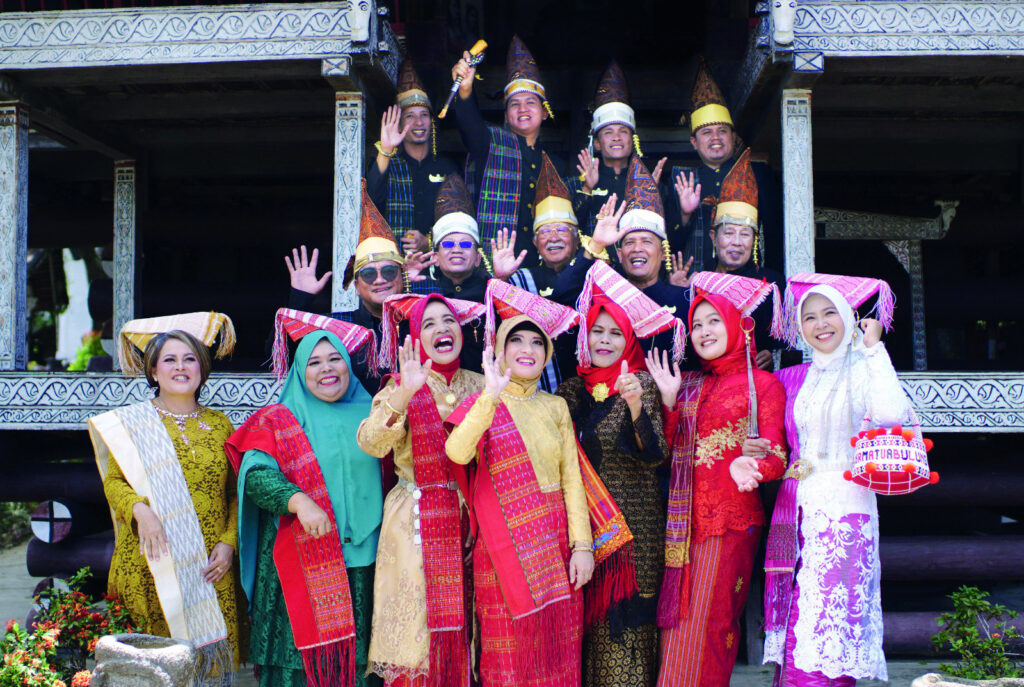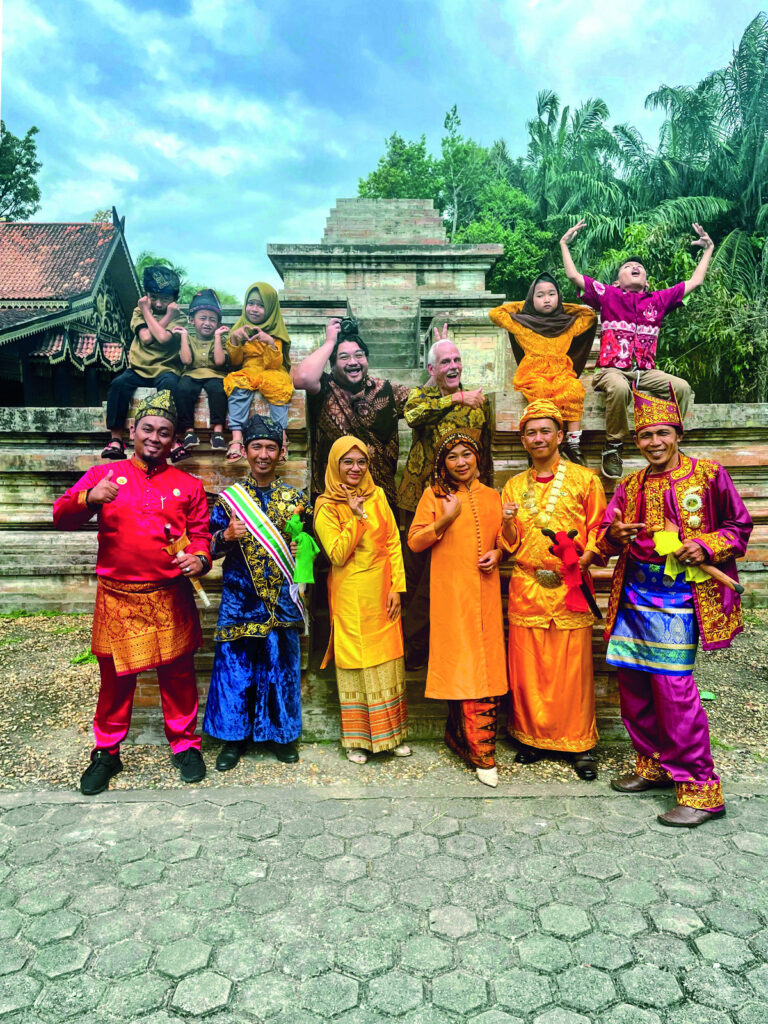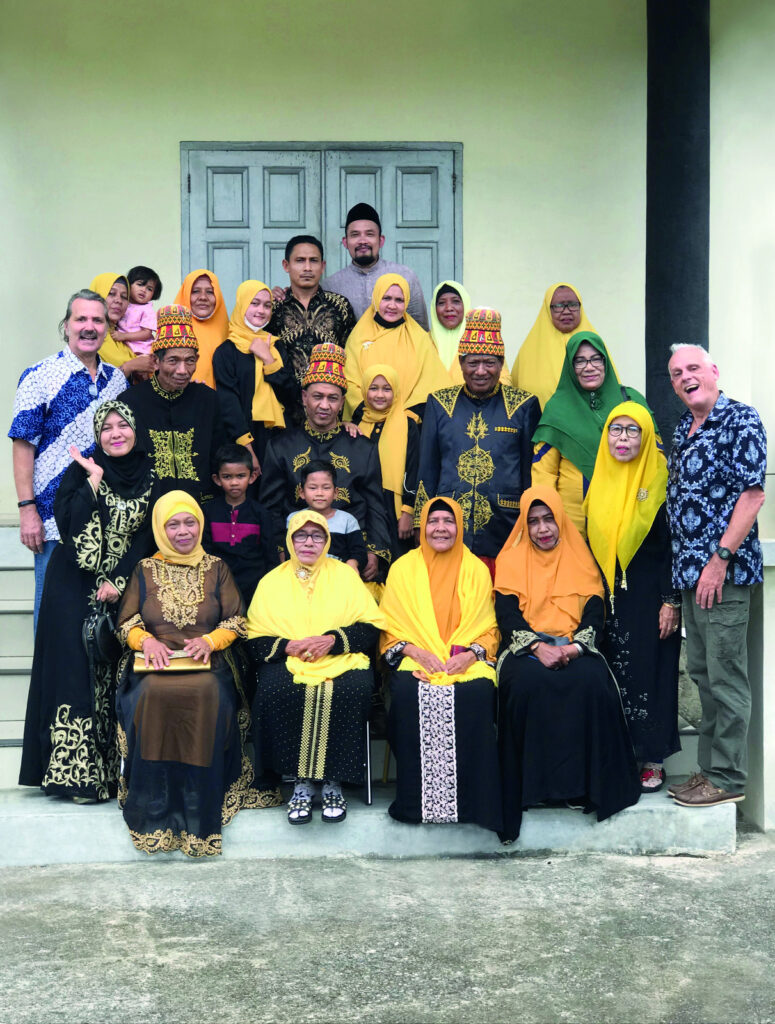
For many Indonesians, our history is often divided into two distinct periods: pre-independence; marked by countless bloody battles to resist occupation by Dutch and Japanese colonial forces, and post-independence; the era of political turmoil foretold by Sukarno, who correctly predicted that the struggle against our own nation would be far harder than fighting external enemies. Yet, rarely do we delve deeper into the glory and intrigue of the many kingdoms that once ruled our nation. We are more than just the pain of our ancestors, we are also their culture, their customs, and their stories.
Randall Rutledge, an American historian with decades of experience studying monarchies around the world—from Africa to Europe and now Asia—has lived in Indonesia for approximately fourteen years. Over the last seven years, he has travelled over 150,000 kilometres across the archipelago, unravelling royal lineages and exploring Indonesia’s forgotten kingdoms. His work culminates in a multi-volume project titled “Kingdoms & Sultanates of Indonesia,” with the first volume focusing on the monarchies of Sumatra, often forgotten outside their respective regions.
The original plan, according to Rutledge, was to produce a book of photographs documenting these royals and their heritage. But as he met the descendants of these monarchies and listened to their stories, he felt a deep responsibility to share their accounts with the world. So his mission is straightforward: to spark greater interest in Indonesia’s forgotten kingdoms—histories obscured by time, colonisation, and shifting political landscapes. These are stories that even many Indonesians know little about, tales of people once revered in their time who survived centuries of turmoil but now live ordinary lives. Palaces gone and raided, sovereigns and heirs murdered and perished– now their descendants live among regular society, some becoming ministers, others teachers or taxi drivers, but each still carrying the extraordinary stories of their ancestry.
Writing this book may have been the easiest part for Rutledge; the real challenge was in the research. Documenting these histories was compounded by the tragic fate of royal archives. “They had libraries. They had amazing archives,” Rutledge explains. However, much of this invaluable documentation was confiscated by colonial powers and shipped off to museums in Leiden and beyond. What wasn’t taken often succumbed to Indonesia’s unforgiving climate, as parchment and paper disintegrated over time. “Most of it’s not in Indonesia anymore,” he laments.
It’s a Herculean task, piecing together fragments of stories scattered across continents. But Rutledge’s work goes beyond just filling the gaps. It offers a sense of justice to families who have long felt misrepresented or forgotten. “They just want the record set straight,” Rutledge shares. “They’re not all looking for riches and power. They just want their histories to be told accurately– or to be told at all.”




The tales Rutledge has unearthed range from inspiring to tragic, from the surreal to the heartwarming. In this book you’ll discover stories rarely told before. Rutledge has dealt with everything from fragmented family records to delicate negotiations with royals wary of revisiting painful pasts, including events like the 1946 Social Revolution, which claimed the lives of many members of the royal families of Sumatran kingdoms, especially in North Sumatra.
Rutledge also found the story of the Pagaruyung Kingdom particularly fascinating. Unlike most monarchies where the succession law is passed through the eldest male, this kingdom operated under a matriarchal system that endured for centuries in the midst of a predominantly patriarchal culture. In the Pagaruyung Kingdom, it is the sisters and female cousins of the late Sultan who decide which eligible man will ascend to the throne.
One might wonder: why isn’t an Indonesian writer leading this charge? Rutledge acknowledges this question, often posed to him by the royals he interviews. Much of Indonesia’s education system during the pre-reformation era was heavily Java-centric, and the regime often fed students a distorted or incomplete version of history. This has left a vacuum in the public’s understanding of their own cultural heritage.
Ironically, Rutledge’s status as an outsider seems to have granted him the detachment and determination required to tackle such a complex project. It’s the kind of work that requires not only an immense respect for the subject matter but also the ability to fund the entire operation independently. Yes, this monumental effort has been financed entirely out of pocket, with no support from the government or corporate sponsors.
But the work isn’t done yet. With six volumes planned, Rutledge is revisiting kingdoms to update portraits of royal children who have grown up since the initial research visit, proving his dedication to accuracy and detail.
This book is far more than just about portraits of kings and queens; it’s about reigniting interest in the stories that shaped a nation. For those who value history, culture, and the art of storytelling, Rutledge’s work is a must-read. After all, how often do you get to witness a puzzle this vast and intricate being pieced together?
To purchase “Kingdoms & Sultanates of Indonesia, Volume I: Sumatra,” visit @kingdomsofindonesia on Instagram and Tokopedia.





